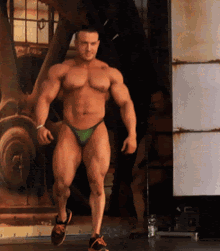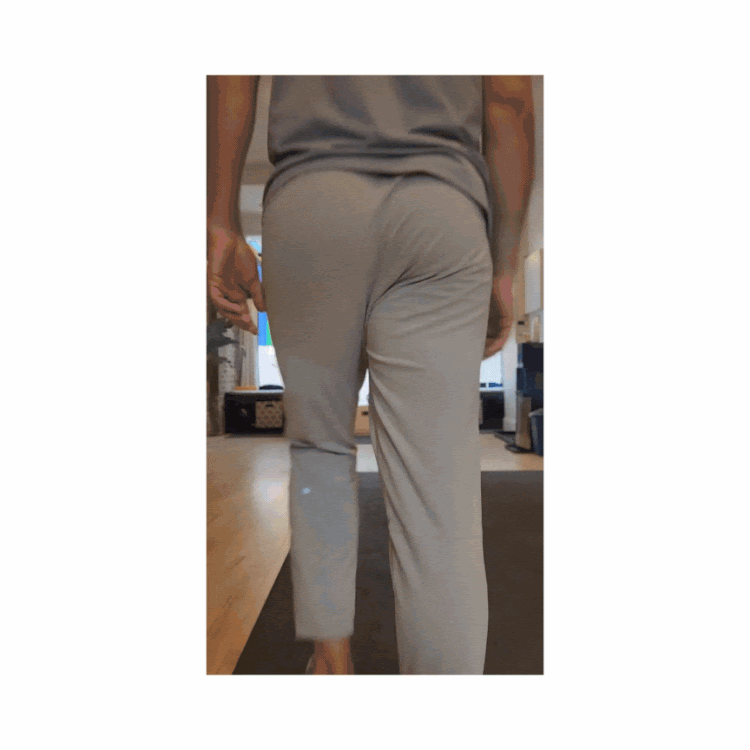Learning how to walk well will change your life. The average reader of this blog takes 10,000 steps a day. If you’re going to do something over 10,000 times a day, ya better do it well.
The way you walk says a lot. The trained eye can learn dozens of things about you just by watching you take a few steps. For example:
- What’s happening in parts of your brain
- How good your balance is
- what injures you’re predisposed to
- Which exercises may help you move better
- How effective said exercises were
This makes you want to walk/move better, right? Well relax, take off your shoes, and walk quickly to the end of the room and back. Your walk tells a story.
I am staring at her butt; it’s research
Gait assessment means assessing the Sacroiliac (SI) joint. The SI joint is the dimples right above your butt. So if you want to learn about gait you gotta start by staring at people’s butts.


As you walk ground force is decelerated from your landing foot and up the leg before crossing the body to the opposing arm (as shown above). The SI joint is where force transfer crosses your bod. Without a doubt SI motion tells us a lot.
4 things can happen at the SI joint, so our friends over at Z health created 4 separate categories. To list:
Category 1
Category 1: No movement at the SI. Lumbar and thoracic vertebrae over rotate in compensation.

How common is this: very.
What’s it tell us? You’re too tight through your low back area. 10,000 steps like this is gonna hurt a little bit. Stand up and walk around the room like this. Now imagine walking like this all day every day.
Yikes.
Category 2
Category 2: identified by the hips moving up and down 1 to 2 inches. Think Jessica Rabbit walking. Slightly better than cat 1.
How common is this: Very. This is also the easiest one to spot.

What’s it tell us: your SI joint is moving too much (compensating). Over 10,000 steps this can create a shearing effect on the joint which could lead to arthritis. Walk around the room like this and you’ll undoubtedly feel it.
Category 3
Category 3: Rotational movement. All things considered we’re moving a little better. You’ll see diagonal creases in clothing sitting above a cat 3 SI joint.
How common is this: Not rare, but not common either.
What’s it tell us: We’re starting to move pretty well here. My left leg/hip below can be called a 3 (note rotational sway).

Me- post 1 hour of yoga. My Left hip is a cat 3, my right is very nearly a cat 4. Yoga and deliberate stretching/mobilization will undoubtedly improve your SI function.
Category 4:
How common is this: Rare.
What’s it tell us: This is, all things considered, what your SI looks like if you’re moving efficiently. Anterior Posterior glute rotation. Vertical crease in clothing. My right side (above) is basically a 4.
The guy who taught me this categorization tells a story about someone walking through Athlete’s village in the Olympics remarking ‘everyone here is a 4’. This, above all, is what we aspire to.
Now what?
Now that we know our category what can we do with this information?
The goal is to move efficiently. Lousy walking/force transmission mechanics can add up to significant pain over the thousands and thousands of reps. If you stretch, mobilize and strengthen you need a yardstick to measure whether not what youre doing is helping, or hurting. Your walk will immediately improve if your workout/drill helps, or worsen if it does not. You can very quickly go from a category 2 to a 4 with some simple drills and exercises.
My video above was taken after an hour of yoga which definitely improved my gait. Had I run 10 miles you’d be looking at a pair of cat 2 hips.
It’s a little tedious asking clients to walk back and forth following drill after drill; but eventually you find the right stretch or drill and their walk improves. They waddled in but now they are gliding. You now know a simple exercise they can do to immediately feel better in their body. Their posture improves, their face lights up a little and out of habit you ask, ‘now how’s that feel?’
But you already know the answer. Hips don’t lie.
